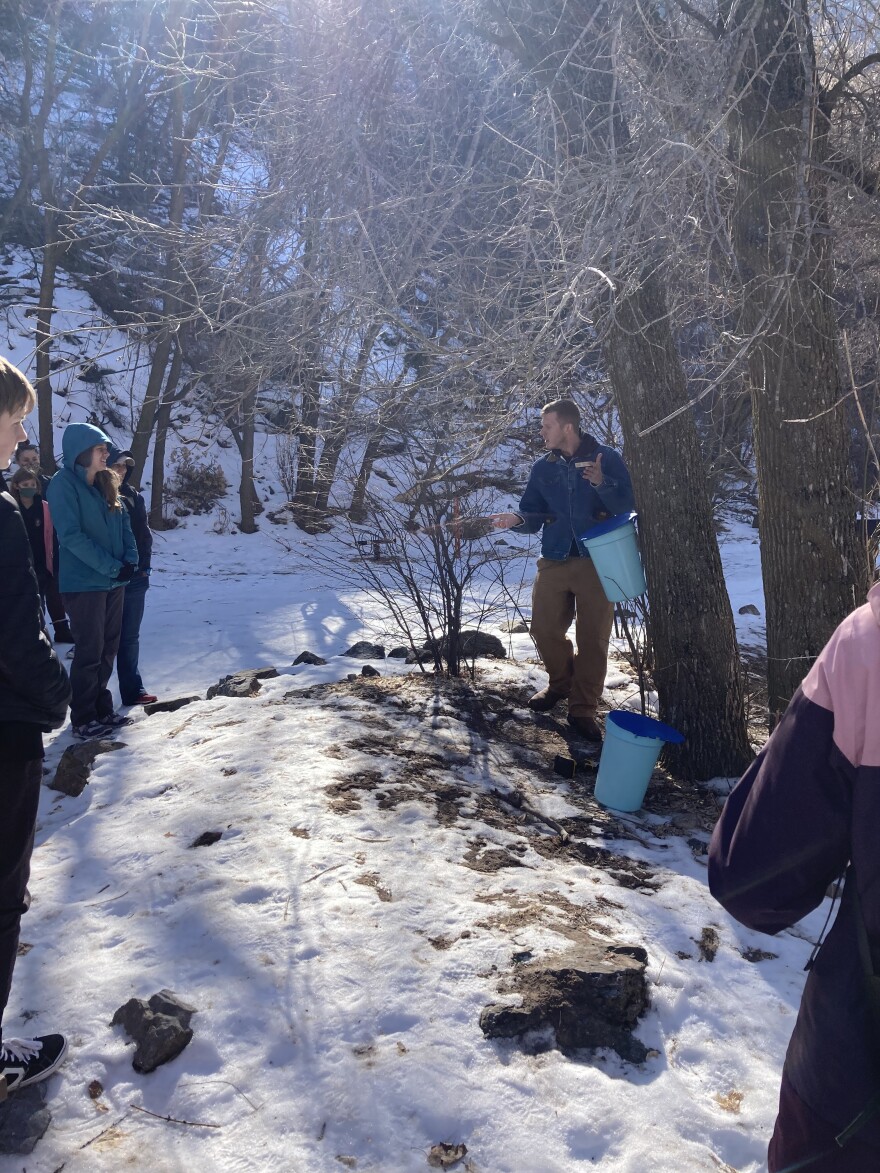Maple syrup. When you picture the maple trees whose sap creates everyone’s favorite pancake condiment, are box elders the first tree to come to mind? Probably not.
The maple syrup industry is largely concentrated in the Northeastern United States, and Canada. But a team of researchers are hoping to change that. Dr. Youping Sun is an Assistant Professor in the Plant, Soils and Climate Department at Utah State University, and the principal investigator for this USDA funded project looking at establishing a maple syrup industry in the Intermountain West.
“There are two objectives in this project. The first one is to have workshops and field days to educate existing maple syrup producers, and then owners who wish to use their land for syrup production," Sun said. "The second objective is to determine the SAP production potential for big tooth maple, box elder and Norway maple, we're going to do this in Utah, New Mexico and, Montana."
Sun explained that increased understanding of the maple tapping process and the kinds of trees people can collect sap from, will help in the creation of an industry. Here in Utah, Stokes Nature Center has been leading local maple tapping workshops for several years.
“So Dr. Sun reached out to Stokes Nature Center, asking if we want to contribute towards this amazing project of broadening the maple industry in the Intermountain West," said Patrick Kelly, Director of Education at Stokes. By collaborating with Sun, Stokes has been able to offer additional workshops in Price and Kaysville, Utah, and as far south as New Mexico.
“We're hoping to get about 200 people throughout the Intermountain West tapping maples, wherever they find a maple and have the rights and legality to go and tap and have some delicious saps," Kelly explained.
Kelly said these local tappers are encouraged to share their data to help develop regionally specific information Sun and his team can use. Anyone who taps a tree in the region can go to the Stokes website and report what kind of tree they tapped, where they found it, and how much sap it produced.
While tapping in this area may be a new idea, it’s been around for centuries
"Maple tapping has been done by indigenous peoples for time immemorial out in those areas," Kelly said. "And so those traditions were adapted and monetized but out here in the intermountain west, while we do have maples of the genus Acer, it's not a practice that was brought over or seen as traditionally viable."
Kelly explained that in the Northeast, sugar maples exist in massive stands, but in this region, our maples are more spread out and not just clustered in a grove.
Our native bigtooth and box elder maple trees may not produce as much sap as sugar maples, but Kelly detailed some non-syrup sap products like concentrating sap to seed yeasts for bread making or bacteria for kombucha, or even drinking sap in the raw.
Sun and Kelly emphasized it is important to consider all the environmental factors trees face. The western US has been experiencing extreme, prolonged drought, and with minimal snowfall this winter, dry times are expected to continue.
“We always tell people to think ethically about how they're going about this practice. If you are in drought conditions, it might be that you need to take less, or not take at all from those different trees to give more breaks between the years that you're tapping certain trees, paying attention to where the trees are located, how their water sources are doing," Kelly said.
Maple tapping begins later in winter as temperatures become warmer, 40-45 degrees during the day, but cold and below freezing at night. As the air cools, the sap in the tree freezes, when it warms the sap liquifies making it possible to collect the sap as it flows. Sun hopes further data collection will clarify what the tapping season looks like in the West.
“I think the data is still not good enough so far. And we will actually keep monitoring this season. Hopefully we can get more tapping season," Sun said.
The year’s season kicked off last weekend with Stokes first tapping workshop, and Sun said they hope to tap from February to early April.



